In a Niche
2.6.2008
By JANICE PODSADA | Courant Staff Writer
WEST HARTFORD - Under the fluorescent lights inside Har-Conn Chrome Co., a 40-pound steel disk that will become part of a Pratt & Whitney aircraft engine glows eerily.
"The nickel-cadmium coating we put on it gives it that greenish sheen," said Tim Backus, 40, the company's president and one of its third-generation owners. "It makes it corrosion-resistant."
Backus describes his family's metal-finishing business as "the forgotten link in the aerospace industry."
A steel spring may be perfectly machined to a helicopter company's specifications, but without the necessary chrome plating, it won't wear well.
Without a thin coating of nickel-cadmium, an engine spacer will corrode. And a simple engine screw that hasn't been silver-plated will seize under high temperatures and become impossible to unscrew.
"We put the heat-resistant and corrosion-resistant coatings on machined parts destined for the aerospace industry," said Backus, whose father, Kent, 63, is the company's chief executive officer and whose cousin, Daniel Backus, is vice president.
Founded in 1948 by Tim Backus' grandfather, Joel, Har-Conn Chrome originally chrome-plated everything from machetes to motorcycle parts.
Then, while taking college classes, Joel Backus met some aerospace engineers searching for a company that could provide metal finishing services. So since the mid-1950s, Har-Conn has been providing those services to the aerospace industry.
Last year, Har-Conn, which operates round the clock in three shifts, had $12 million in revenue, Backus said. Located at 603 New Park Ave., Har-Conn now occupies several buildings whose square footage totals 40,000 square feet. The company is now betting that the demand for larger, more fuel-efficient aircraft will dramatically boost aircraft construction.
"In the next 20 years, 28,000 aircraft are going to be built," Backus said, citing a study the company conducted. "That's more than has been built to date, and that's just commercial airplanes. That's not counting military aircraft or the number of smaller planes.
"We're in a unique situation. Worldwide, there are only a handful of special metal finishers like us."
But the prospect of increased production had Har-Conn's owners asking: "Should we stay where we are, or grow?" Backus said.
The decision?
"We're investing heavily," Backus said.
The company recently purchased a 20,000-square-foot facility, a former construction supply company at 593 New Park Ave., which it is renovating.
Since entering the aerospace industry in the 1950s, Har-Conn has grown, one annex, one process at a time. In 2001, a fire in the silver-plating room shut down the company for a week. In the aftermath, a new wing was added and the shop was rewired.
Despite its piecemeal growth over the years, workers are bumping elbows.
"In 2005, we had 65 people working here. Now we have 97 people," Backus said. "We're kind of crowded in here."
On a recent morning, Easton Redway, who has worked at Har-Conn for 26 years, slowly lowered a 40-pound engine housing, which was suspended by a pulley, into a chromic-anodize solution.
Once the part disappeared into the 4-foot-square vat, Redway turned on the electrical current and slowly raised the voltage in the tank to 40 volts.
Variations in current determine the thickness of the plating. For many parts, the final coating can range from .0003 inches to more than .015 inches.
Eventually, Redway and other operators will move into the newly purchased building.
With the added space and changes intended to make the company a one-stop finishing shop, Backus hopes to hire more than 60 workers in the next five years.
"We need inspectors, production people, engineers," Backus said.
Many of the available jobs require only a high school degree.
"You don't have to have a technical background," he said. "Maybe you're just good with your hands. We train our own people, since there aren't many places that teach plating."
"What we do is often the last step in the process," Backus said. "We like to consult with our customers before they start a job."
But that doesn't always happen.
A few weeks ago, a new part — a cover for a nitrogen generator designed to prevent electrical fires — just showed up at the door.
"We had to figure out how to finish it," Backus said.
Once an aircraft part has been machined, it will typically wind its way through a network of specialized subcontractors before it is finally delivered to the prime contractor, the aircraft company.
Its first stop might be at a subcontractor whose job is to heat-treat the part. It's next stop might be a non-destructive tester, a subcontractor who specializes in quality control checks that look for cracks or flaws.
"From there it might come to us for plating," Backus said. "After we're done with it, we might ship it to another company for painting. That's five different purchase orders, five different shippers. We're trying to outfit our new shop so that we can also test, heat treat and paint those parts," Backus said.
"Our goal is to build large enough to house all of our processes."
CONTACT INFORMATION:
Marketing
marketing@har-conn.com
603 New Park Avenue
West Hartford, CT 06110
Tel: 860.236.6801
 Anodizing
Anodizing Cadmium Plating
Cadmium Plating Chemical Film Treatment
Chemical Film Treatment Chrome Plating
Chrome Plating Dry Film Lubricant
Dry Film Lubricant Electroless Nickel Plating
Electroless Nickel Plating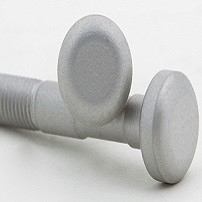 High Temp Aluminum Coating
High Temp Aluminum Coating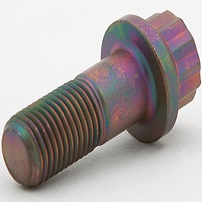 Nickel Cadmium Plating
Nickel Cadmium Plating Nickel Plating
Nickel Plating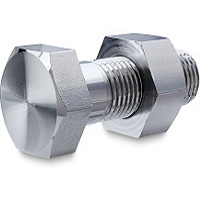 Passivation
Passivation Phosphate
Phosphate Prime and Paint
Prime and Paint Silver Plating
Silver Plating Strip and Blast
Strip and Blast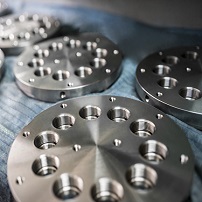 Titanium Clean
Titanium Clean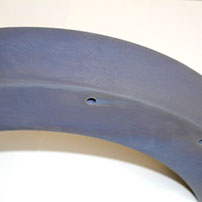 Zinc Nickel Plating
Zinc Nickel Plating





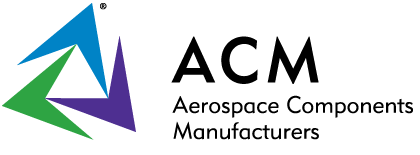

 Chemical Processing
Chemical Processing

